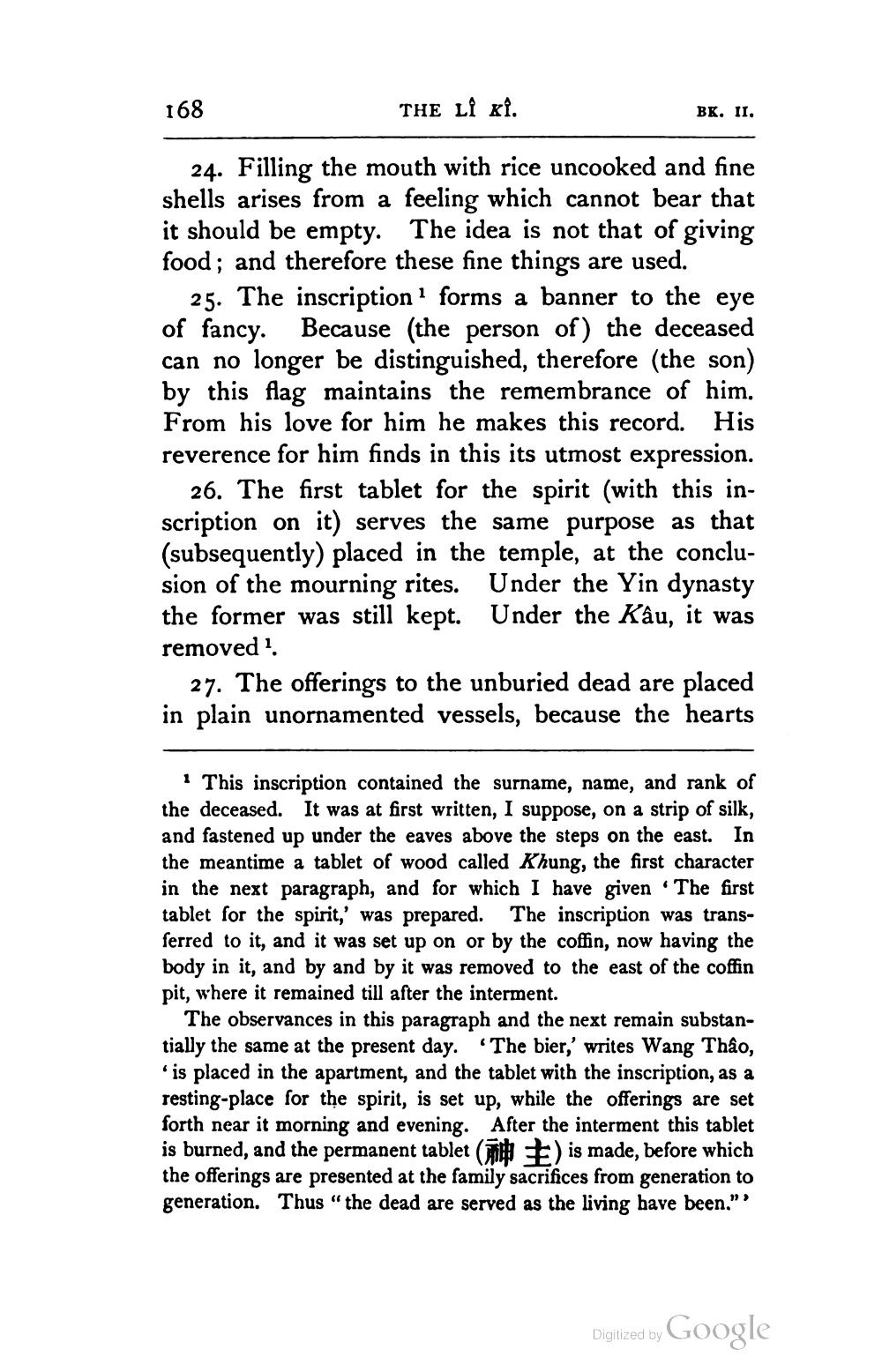________________
168
THE LI XI.
24. Filling the mouth with rice uncooked and fine shells arises from a feeling which cannot bear that it should be empty. The idea is not that of giving food; and therefore these fine things are used.
BK. II.
25. The inscription1 forms a banner to the eye of fancy. Because (the person of) the deceased can no longer be distinguished, therefore (the son) by this flag maintains the remembrance of him. From his love for him he makes this record. His reverence for him finds in this its utmost expression. 26. The first tablet for the spirit (with this inscription on it) serves the same purpose as that (subsequently) placed in the temple, at the conclusion of the mourning rites. Under the Yin dynasty the former was still kept. Under the Kâu, it was removed 1.
27. The offerings to the unburied dead are placed in plain unornamented vessels, because the hearts
1 This inscription contained the surname, name, and rank of the deceased. It was at first written, I suppose, on a strip of silk, and fastened up under the eaves above the steps on the east. In the meantime a tablet of wood called Khung, the first character in the next paragraph, and for which I have given 'The first tablet for the spirit,' was prepared. The inscription was transferred to it, and it was set up on or by the coffin, now having the body in it, and by and by it was removed to the east of the coffin pit, where it remained till after the interment.
The observances in this paragraph and the next remain substantially the same at the present day. The bier,' writes Wang Thâo, 'is placed in the apartment, and the tablet with the inscription, as a resting-place for the spirit, is set up, while the offerings are set forth near it morning and evening. After the interment this tablet is burned, and the permanent tablet (E) is made, before which the offerings are presented at the family sacrifices from generation to generation. Thus "the dead are served as the living have been."
Digitized by
Google




